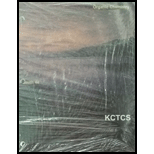
Concept explainers
(a)
Interpretation: The solvent-reactant/halide-base pair which will give the fastest elimination reaction is to be stated.
Concept introduction: The
(b)
Interpretation: The solvent-reactant/halide-base pair which will give the fastest elimination reaction is to be stated.
Concept introduction: The rate of elimination reactions depends on the type of halide being used. A halide in which carbon attached to the leaving group has more number of alkyl groups is usually preferred.
(c)
Interpretation: The solvent-reactant/halide-base pair which will give the fastest elimination reaction is to be stated.
Concept introduction: The rate of elimination reactions depends on the type of halide being used. A halide in which carbon attached to the leaving group has more number of alkyl groups is usually preferred.
Want to see the full answer?
Check out a sample textbook solution
Chapter 8 Solutions
KCTCS Organic Chemistry Value Edition (Looseleaf) - Text Only
 Organic Chemistry: A Guided InquiryChemistryISBN:9780618974122Author:Andrei StraumanisPublisher:Cengage Learning
Organic Chemistry: A Guided InquiryChemistryISBN:9780618974122Author:Andrei StraumanisPublisher:Cengage Learning
